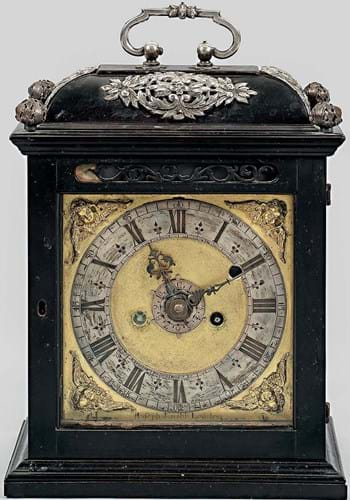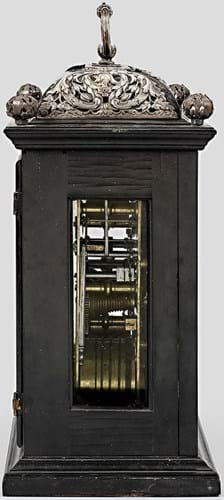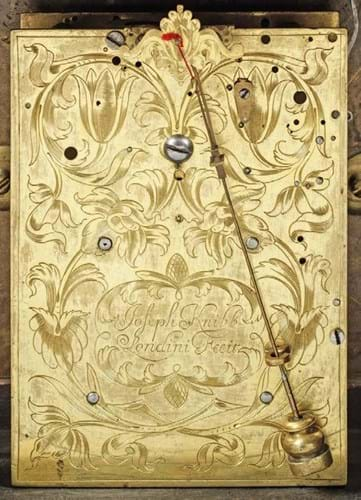
Charles II ebony and silvermounted table clock by the London golden-age clockmaker Joseph Knibb – €50,000 (£42,500) at Schloss Ahlde.
Against a guide of €7500-15,000, it took €50,000 (£42,500) at Schloss Ahlden in Lower Saxony on May 7.
The repoussé silver mounts (some missing to the front door) mark this 14in (35cm) high clock as one of Knibb’s more deluxe productions, probably made to order for one of his wealthier customers.
The clock has a long German aristocratic provenance. It came for sale from the family of Countess Marie Agnes von Schönburg- Glauchau (1912-94) who had inherited it from her aunt Eleonore Sommer von Seckendorff (1887- 1970). It is possible it was originally made for export at a time when English clocks were highly valued across Europe.
The case design – from the Third Phase identified in Ronald Lee’s book The Knibb Family – Clockmakers (1964) – dates it to c.1680-90. The backplate of the movement illustrates the Dutch influence with the engraved tulips and bears the signature Joseph Knibb Londini fecit.
The clock will require significant restoration and replacement to return it to its former glory.
The bellwork and other complications fitted when the clock left Knibb’s workshop at ‘the sign of The Dial’ on Fleet Street are now missing. Knibb made clocks with a variety of striking mechanisms from hour, Roman and Dutch striking to grande sonnerie with this clock probably once featuring a quarter repeating pull mechanism.
Both collectors and international dealers took part in the auction.
With 26% buyer’s premium added, the winning bidder (a European buyer against dealers from the UK and the Netherlands) paid €63,000.
















